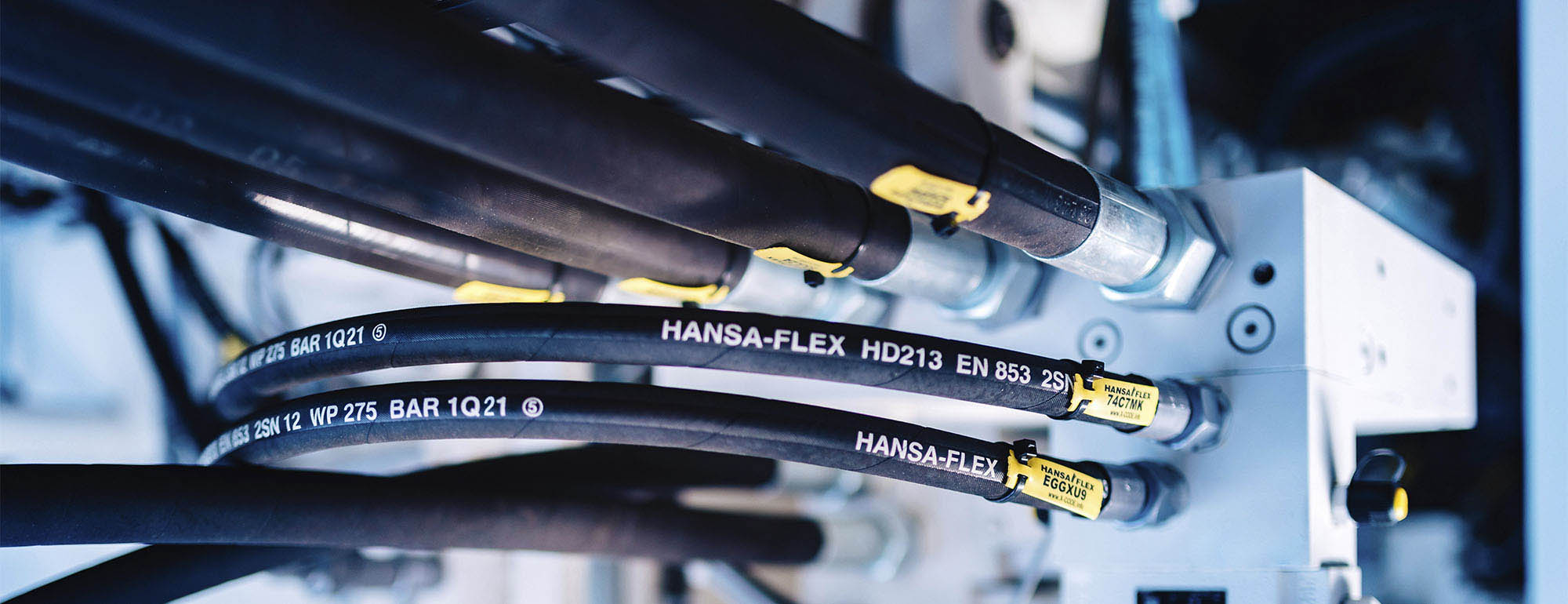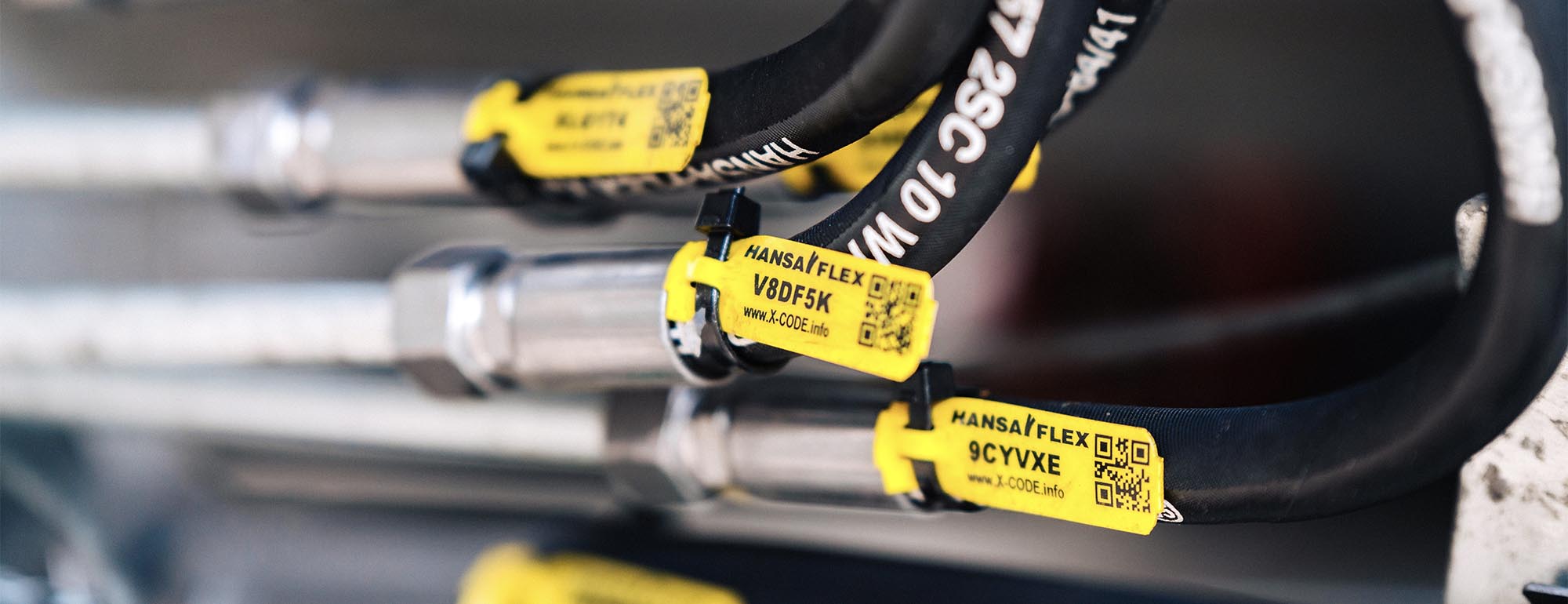During the installation of hydraulic hose lines, even minor fitting errors can significantly shorten the service life of the hoses and lead to both unscheduled downtimes and dangerous situations. Various standards such as DIN 20066 and ISO 17165-2 theoretically guarantee safe installation, but in practice the picture often looks different. Sometimes the design stage of a system can be completed before anyone realises that hose lines still need to be integrated. The result is fitting situations that make standard-compliant installation considerably more difficult and lead to serious defects. Closer cooperation between design engineers and hydraulics experts helps to avoid installation-related problems before they arise. HANSA‑FLEX experts are available as professional consultants during the planning phase.
Five essential points for installation which is safe and complies
Torsion
Hydraulic hoses usually consist of several layers. If a hose is twisted during installation the layers rub against each other, which considerably shortens its service life. As a rule of thumb, twisting a hose by 7° reduces its service life by 80%. To avoid torsional damage, care must therefore be taken during installation to ensure that the hydraulic hose line is not twisted, for example when the union nuts are tightened.- Minimum bending radius
The smallest permissible bending radius of a hydraulic hose depends on its rated diameter and design. The bend provided for in the design should only begin after a length of 1.5 times the outside diameter behind the fitting. If the minimum bending radius is not achieved, the pressure medium (e.g. wire mesh) of the hose is overextended on the outside of the bend, resulting in gaps in the cover, which can lead to oil leakage. On the inside of the bend the liners are compressed, so that they no longer fit tightly enough to the inner layer of the hose and lose their pressure-bearing properties. In some cases, appropriate fittings can prevent the hose from falling below the minimum bending radius. - Abrasion
If hydraulic hose lines are laid over an edge or too close together, the inherent movement of the hoses causes friction, which can abrade the outer layer. If the outer layer is worn through, the inner pressure medium (e.g. wire mesh) is exposed and corrosion and failures occur. Where friction can't be avoided, hoses with more abrasion-resistant outer layers should be used. - Tensile load
Tensile loads on hydraulic hose lines must be avoided, as they can endanger the safe integration of the fittings. Please note that hydraulic hose lines can shorten under pressure (up to 4% at the maximum permissible operating pressure), and must therefore always be laid with a certain amount of slack. Possible movement must also be taken into account. - Hose brackets
Hose brackets must be fitted in such a way that they don't hinder the natural movement and changes in length of the hose. Hose lines require freedom of movement in particular where they are bent, as otherwise the outer layer will be abraded by the bracket. Hose brackets should therefore only be installed on straight sections.
More detailed information on the installation, operation, maintenance and inspection of HANSA‑FLEX hydraulic hose lines can be found in Technical Information Hose Technology.




